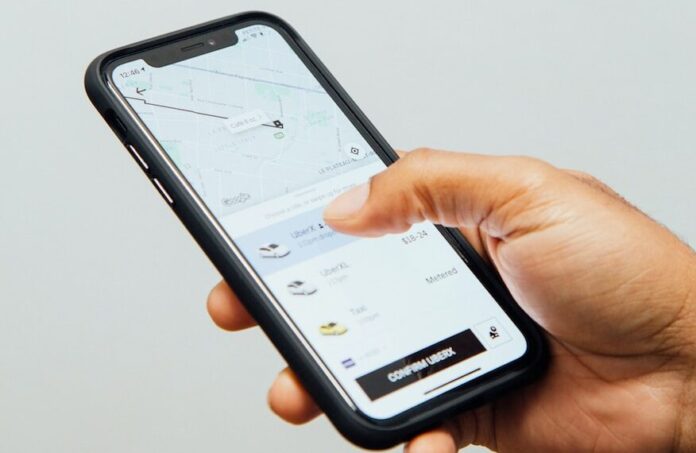
Both Uber and Lyft are ride-hailing companies that operate in a similar manner. When it comes to safety, both companies prioritize the well-being of their passengers and drivers. However, it’s important to note that safety can vary based on various factors such as location, driver behavior, and individual experiences. Here are some aspects to consider:
- Background checks: Both Uber and Lyft conduct background checks on their drivers, including criminal and driving history checks. However, the stringency of these checks may vary by location.
- Driver ratings and feedback: Both platforms allow passengers to rate their drivers and provide feedback after each trip. This feedback system helps in maintaining accountability and ensuring a certain level of service quality.
- Safety features: Both Uber and Lyft have implemented safety features in their apps. These may include features like GPS tracking, sharing trip details with friends or family, and in-app emergency assistance.
- Insurance coverage: Uber and Lyft provide liability insurance coverage for their drivers, which typically extends to passengers as well. The specifics of the coverage may vary, so it’s important to understand the details.
- Safety initiatives: Both companies have introduced safety initiatives to enhance passenger and driver safety. For example, Uber launched a feature called “Verify Your Ride,” which prompts passengers to verify the driver and vehicle details before getting in the car.
Ultimately, it’s difficult to definitively determine which service is safer, as safety can be influenced by various factors. It’s always a good practice to remain vigilant, check the driver and vehicle details before entering the car, and trust your instincts when it comes to personal safety.
How Safe Are Uber and Lyft?
Both Uber and Lyft are ride-hailing services that are used worldwide. They have similar business models – they both connect passengers with drivers and facilitate payment, and while there are several other ride-hailing apps available, these two are by far the most popular. Both have become increasingly popular over the years, and they have an extensive fleet of drivers and vehicles.
1. What We Looked at:
We analyzed the safety ratings on both Uber and Lyft for a wide variety of criteria and discussed our findings below. In this section, we’ll look at the safety ratings for drivers on these apps that factor in both passenger and driver safety, including fatalities. We also discuss key factors that may affect passenger safety, such as surges, surge pricing, and cancellation policies.
2. Crime Statistics:
Considering that both Uber and Lyft provide services for transporting passengers in a vehicle, we wanted to see how safe those passengers were relative to other vehicles on the road. We compiled data from the FBI’s Crime Statistics database regarding the total number of violent crimes per 100,000 people and found that both Uber and Lyft provided almost twice as many safe rides per 100,000 people than taxicab drivers. So there are nearly twice as many safe rides per capita with ride-hailing services than there are with taxicabs.
Common Issues with Rideshare Services:
1. Surge Pricing:
Surge pricing is a common issue with ride-hailing services. When surge pricing is used, drivers may be asked to charge a higher price for providing rides at certain times of the day or week. The problem here is that surge pricing may make it more difficult for drivers to earn a decent income and could lead to them canceling their trips if they’re charging far more than the average trip is worth.
Uber does not disclose their surge pricing publicly, so it may be difficult to know how high the surge really is. The good news is that they do have a cap on the surge pricing of 2.8x in most cases, although there are some exceptions. Lyft, on the other hand, provides specific details about how much higher their prices will be when there is a surge for a particular area or time frame.
2. Sexual Assaults:
Another notable issue with ride-hailing services is that, in some cases, drivers have committed sexual assault against their passengers. The problem appears to be so widespread that there has been a call for the U.S. Department of Transportation (USDOT) to conduct a comprehensive study into the subject. As for Uber, a number of sexual assault complaints against drivers have gone to the police. There’s also evidence that they have failed to deal with multiple complaints in a timely manner for over two years.
3. Physical Assaults:
This has also been a common issue with ride-hailing services, and Lyft is no exception. In some cases, Lyft drivers have assaulted passengers for no apparent reason. The problem here is that if there’s an assault on the part of the driver, both Uber and Lyft may choose not to take any action against the driver and instead defend them. This could lead to more incidents of assault against passengers across all ride-hailing services in the future.
Who Is Most at Risk?
Part of the problem with Uber and Lyft is that passengers are usually not able to see the driver before getting into the car. In fact, in some cases, they’re asked to wait in a designated area for their driver to arrive. This means that there’s no way to identify if there are any red flags at first glance with drivers or their vehicles. This is one of the reasons why a number of sexual assaults have taken place in Uber or Lyft cars.
When Is the Highest Risk Time to Take a Ride?
The highest risk time to take a ride is when the surge pricing is high. It’s no secret that prices go up during peak hours, but did you know that there are numerous reports of sexual assaults and physical assaults occurring at these times as well? So the best time to take an Uber or Lyft is during non-peak times when there are fewer people who need rides, and it will be easier to find a ride. Drivers are more likely to assault their passengers when they pick them up or drop them off. As drivers stop at the designated location, passengers stay put while they wait for them to arrive. Sexual assaults have occurred because of this. If you’re deciding between Uber and Lyft, it’s best to wait until you get into the vehicle before needing to use the app.
In Conclusion:
Uber and Lyft are excellent ride-hailing alternatives to taxicabs. However, we do urge discretion when it comes to taking an Uber or Lyft. They’re safer than taxicabs but not completely safe, especially during low times or surges. We encourage you to ask for details about the drivers, such as their name and license number, before entering the vehicle, and remember that they are not required by law to disclose any details about them during your ride.










